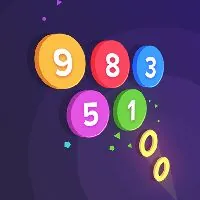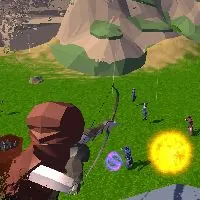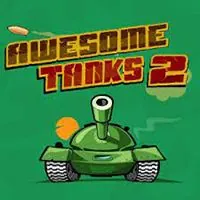KONG CLIMB
SIMILAR GAMES
Description
Kong Climb - GitLab Games
About Kong Climb - GitLab Games
In the dynamic and ever-evolving landscape of digital challenges and developer camaraderie, the GitLab Games initiative stands out as a unique platform for fostering collaboration, problem-solving, and sheer ingenuity. Among the many exciting competitions and puzzles presented, Kong Climb emerges as a particularly engaging and thought-provoking challenge. This isn't merely a game; it's a rigorous test of logic, algorithmic thinking, and a keen understanding of fundamental programming principles. Participants are tasked with navigating a complex, multi-stage environment, akin to ascending a colossal structure, where each step requires careful consideration and precise execution. The objective is to reach the summit, not through brute force, but through the intelligent application of code and strategy.
The essence of Kong Climb lies in its intricate design, which mirrors real-world development scenarios where efficiency and correctness are paramount. We, as participants and contributors to the GitLab Games community, approach this challenge with a profound appreciation for its educational value and its capacity to push our collective technical boundaries. Our journey through Kong Climb is a testament to the power of shared knowledge and the pursuit of excellence in software development. We understand that success in this challenge is achieved through meticulous planning, iterative refinement, and a deep dive into the underlying mechanics of the problem. This detailed exploration will guide you through the multifaceted aspects of Kong Climb, illuminating the strategies, techniques, and mindset required to conquer its digital peaks.
The Core Mechanics of Kong Climb
At its heart, Kong Climb presents a series of levels, each representing a distinct stage in our ascent. These levels are not arbitrary; they are carefully crafted obstacles designed to test specific skills. We encounter challenges that might involve navigating through treacherous paths, collecting essential resources, or overcoming seemingly insurmountable barriers. The core mechanic revolves around writing code that can autonomously control a character or agent to traverse these levels. This agent possesses certain capabilities, such as movement, interaction with objects, and decision-making, all governed by the logic we implement.
The environment within Kong Climb is often dynamic. Platforms may shift, obstacles may appear or disappear, and enemies might patrol certain areas. This dynamism requires our solutions to be robust and adaptable. A static, hard-coded approach will inevitably fail as the conditions change. We must design algorithms that can react to these environmental cues, recalculate paths, and make informed decisions on the fly. The visual representation, while illustrative, is secondary to the underlying computational problem. We focus on the data structures, algorithms, and state management that dictate the agent's behavior.
The progression through Kong Climb is typically sequential. Completing one level unlocks the next, often with an increased degree of complexity. This graduated difficulty curve is a deliberate design choice, allowing participants to build upon their knowledge and skills. Early levels might focus on basic movement and conditional logic, while later levels might demand sophisticated pathfinding, resource optimization, and even rudimentary forms of artificial intelligence. We embrace this progression, seeing each new challenge as an opportunity to learn and refine our coding prowess.
Navigating the Levels: Strategies and Algorithms
Successfully conquering Kong Climb necessitates a strategic approach to problem-solving. We don't just write code; we architect solutions. Before even touching a keyboard, a significant portion of our effort is dedicated to understanding the level's layout, identifying potential pitfalls, and devising a high-level plan. This initial analysis phase is crucial for avoiding wasted development time on ineffective strategies.
For navigation challenges, common algorithms come into play.
- Pathfinding Algorithms: When the path is not immediately obvious, algorithms like A (A-star) or Dijkstra's algorithm become invaluable. These algorithms help us find the shortest or most efficient path from a starting point to a destination, considering obstacles and costs associated with movement. We meticulously define the cost function and heuristic for these algorithms to ensure optimal performance within the game's constraints.
- State Machines: To manage the agent's behavior and reactions to different situations, state machines are a powerful tool. An agent can exist in various states (e.g., "moving," "collecting," "attacking," "idle"), and transitions between these states are triggered by specific conditions or events. This structured approach makes complex behaviors manageable and debuggable.
- Greedy Algorithms: In certain scenarios where making the locally optimal choice at each step leads to a globally optimal solution, greedy algorithms can be employed. These are often simpler to implement but require careful analysis to ensure their correctness for the specific problem at hand.
Resource management is another critical aspect of Kong Climb. Often, our agent needs to collect items, such as keys to unlock doors, power-ups to enhance abilities, or materials to overcome environmental hazards. Our code must intelligently prioritize resource collection, balancing the need for resources with the urgency of reaching the objective. This might involve calculating the most efficient routes to resource nodes or determining when it's more advantageous to skip a resource to avoid a time penalty or a greater risk.
Technical Considerations and Implementation Details
The choice of programming language can influence the development process, but the fundamental algorithmic principles remain the same. We often find ourselves working with languages that offer strong libraries for data structures and algorithms, allowing for efficient implementation. The GitLab Games environment typically provides an API or SDK that our code interacts with. Understanding this interface thoroughly is paramount.
We pay close attention to the following technical details:
- Data Structures: The efficient organization of data is key. For pathfinding, this might involve using priority queues for A or Dijkstra's. For representing the game world, adjacency lists or matrices might be employed for graph-based representations. We meticulously select data structures that match the problem's requirements for speed and memory efficiency.
- Performance Optimization: In time-sensitive challenges, every millisecond counts. We continuously profile our code, identify bottlenecks, and apply optimization techniques. This can range from algorithm selection to low-level code improvements. Cache efficiency and reducing redundant computations are always at the forefront of our minds.
- Error Handling and Robustness: Our solutions are designed to be resilient. Unexpected game events or edge cases should not cause our program to crash. Comprehensive error handling and defensive programming practices ensure that our agent behaves predictably even in unforeseen circumstances. This includes handling invalid input from the game environment and gracefully managing potential infinite loops.
- Modularity and Reusability: As we progress through different levels of Kong Climb, we strive to build our solutions in a modular fashion. This means breaking down complex logic into smaller, reusable functions or classes. This not only makes the code easier to understand and debug but also allows us to adapt and reuse components across different challenges within the GitLab Games ecosystem.
The Collaborative Spirit of GitLab Games and Kong Climb
While Kong Climb is an individual challenge in its execution, the spirit of GitLab Games is inherently collaborative. We often learn from the solutions and insights shared by fellow participants. The open nature of the GitLab platform encourages discussion and the exchange of ideas. This community-driven approach accelerates learning and fosters a shared sense of accomplishment. We might share pseudocode, discuss algorithmic approaches, or even collaboratively debug complex issues. This collective intelligence is a significant factor in our overall success and the enrichment of the entire GitLab Games experience.
The challenges presented in Kong Climb are not just about winning; they are about growth. Each solved puzzle, each conquered level, contributes to our development as programmers and problem-solvers. We embrace the learning process, viewing failures as valuable feedback that informs future strategies. The journey of climbing the digital "Kong" is a metaphor for our professional development, requiring persistence, adaptation, and a commitment to continuous improvement. We are proud to be part of the GitLab Games community and are eager to tackle every challenge, including the formidable Kong Climb, with dedication and expertise.
Play Kong Climb for free on GitLab Games, where we offer a dynamic platform featuring thousands of the best unblocked games online. Our extensive library ensures pure enjoyment with an ad-free experience, keeping you immersed in the action without distractions. Accessible from school, work, or home, our Gitlab games deliver seamless fun anywhere you are. We’ve streamlined the experience—play effortlessly with your keyboard or a simple click, tailored to how you like to game. Dive into our collection of unblocked games, including popular categories like unblocked games 66, unblocked games wtf and cool math games Gitlab, and enjoy entertainment that’s always within reach and endlessly captivating.
















































